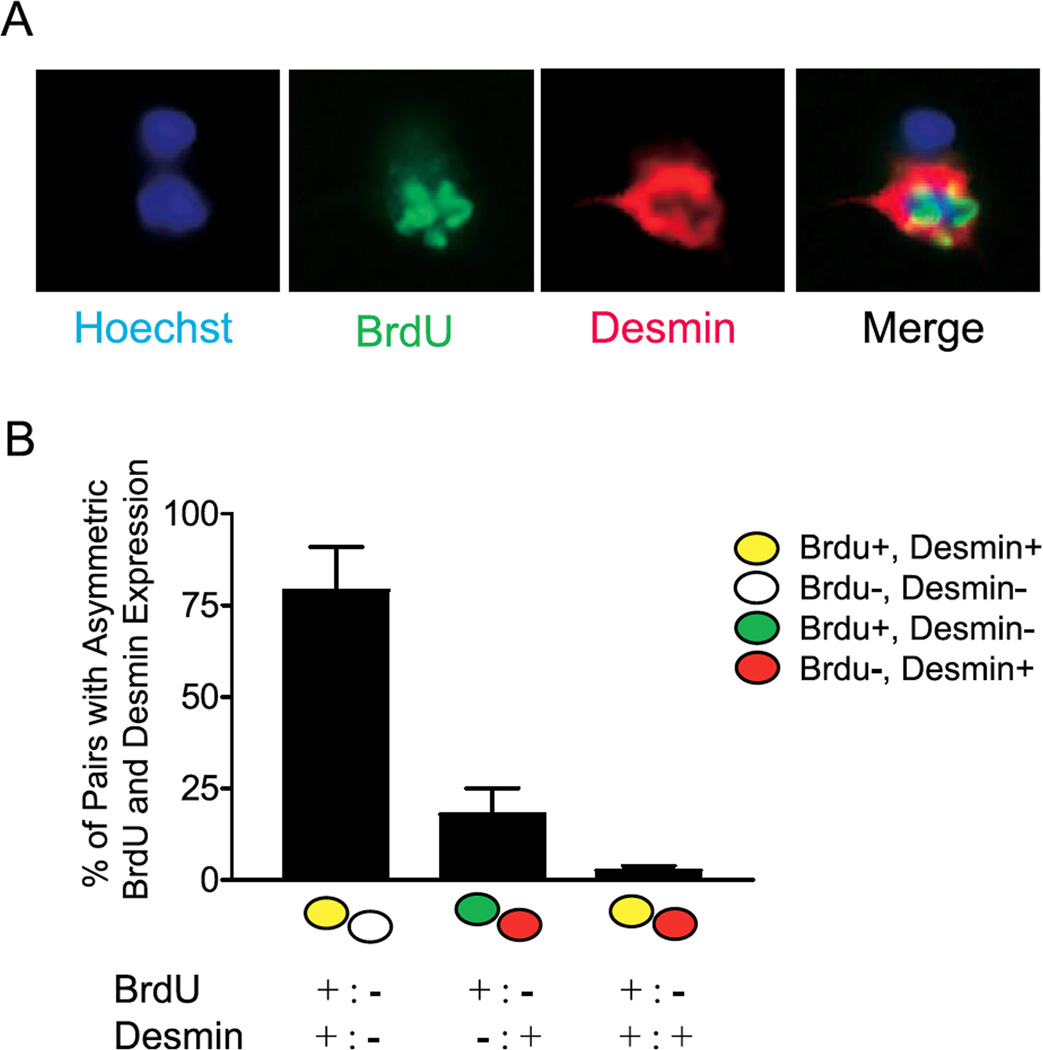Figure 8.
“Divergent cell fates associated with asymmetric segregation of template strands. (A) Pairs of cells were co-immunostained for BrdU and the myoblast marker Desmin; representative images are shown. (B) The data from experiments as in (A) were quantified. Pairs with Desmin expression and asymmetric BrdU labeling were distinguished based on the pattern of Desmin expression (asymmetric and coincident with BrdU, asymmetric and mutually exclusive with BRdU, or symmetric). The legend for individual cells is shown to the right, and the legends for the cell pairs are shown below. Data represent mean +/− SEM (n=4).” Figure and legend reprinted from Fig. 3 of the open-access review of Conboy et al. (2007; doi:10.1371/journal.pbio.0050102.g003.). In this study of dividing mouse muscle stem cells (satellite cells) we see that the daughter cells inheriting the older templates (no BrdU) usually retain the more immature phenotype, thus apparently remaining in the stem cell population, while the daughter cells inheriting the younger template (BrdU positive) show that they are forming the differentiated cell type, in this case, the Desmin-containing myoblast. This kind of asymmetric division is different from the examples shown in figure 3 of the present review. The strategy of asymmetric segregation of template strands may ensure that the stem cells remain as an immortal cell clone, while the fate of the differentiated cell is only eventual senescence.

